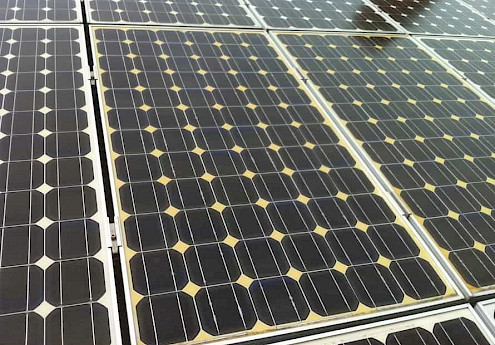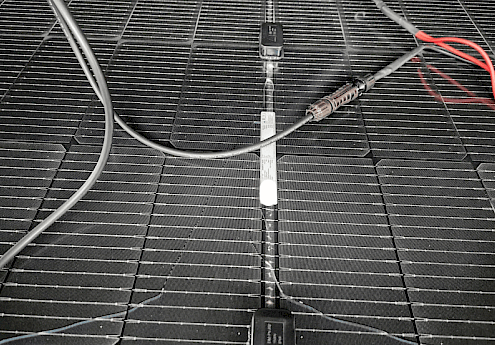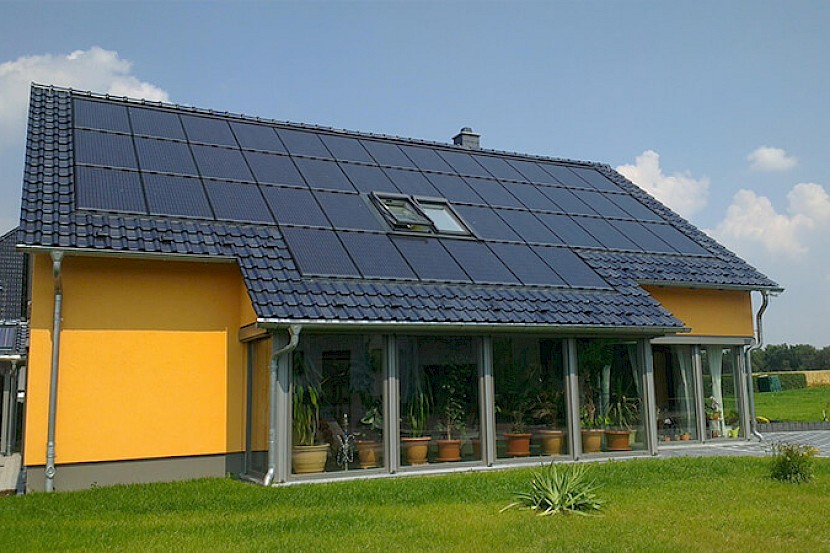
Monocrystalline solar modules
The development of monocrystalline solar cells goes back to space technology. Particularly powerful solar cells were required here, which at the same time took up little space and were lightweight. The technology developed for this was later used for photovoltaic systems on earth. In recent years, solar cells have increased in size from 100 mm (4 inch) to 125 mm (5 inch) cells and finally to 156 mm (6 inch) cells. They are known for their high efficiency. However, modules with monocrystalline solar cells are still more expensive than those with polycrystalline cells. Whether it is worth using the high-quality technology depends on the respective requirements.

How are the monocrystalline solar cells produced?
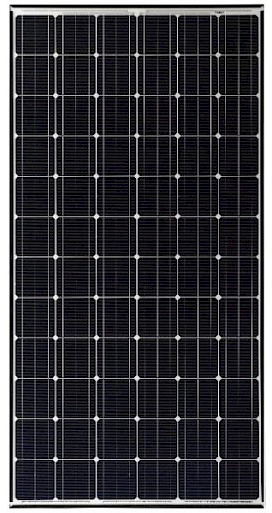
Monocrystalline solar cells are made from high-purity silicon. This material is known for the production of semiconductors. A single crystal is pulled from a pure silicon melt by immersing a seed crystal for a few millimeters and slowly pulling it out. The silicon accumulates on the seed crystal and forms a single crystal in the form of a cylinder through the application of the laws of the lowering of the melting point. This cylinder is later cut into approx. 0.4 mm thin slices, the so-called wafers.
Individual monocrystalline solar cells deliver very little energy. Therefore, the cells are connected to form a solar module. You can use either a series connection or a parallel connection. In a series connection, monocrystalline solar cells generate a higher voltage, since the voltage of the individual elements is added in this connection. This variant is often used for smaller solar modules. With a parallel connection, the entire photovoltaic module delivers a higher average yield if the PV module is temporarily affected by shading.
The solar cells are attached to a carrier material and covered with special film or glass. Brackets and a frame provide stability and facilitate installation on the roof.
What are the advantages of monocrystalline solar modules?
Monocrystalline solar modules are more efficient than polycrystalline modules. When using them, higher yields can therefore be expected. The modules are delivered in excellent quality and have a very long service life of around 30 years. The monocrystalline solar modules are very robust and hardly susceptible to wear and tear due to environmental influences. The age-related solar degradation is very low. The high quality results in minimal maintenance. Due to the high efficiency, monocrystalline modules are well suited for small roof areas. This is particularly important for private users, since usually only the roof of their own home and smaller outbuildings are available. With monocrystalline solar modules you can get the maximum yield from the available areas.
Disadvantages of monocrystalline technology
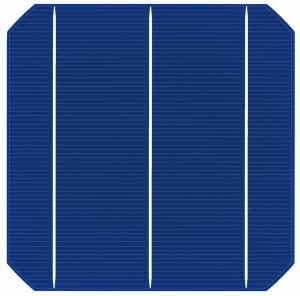
Unfortunately, monocrystalline solar modules also have some disadvantages such as the high acquisition costs, a significantly higher weight and losses in unfavorable irradiation conditions. If the photovoltaic modules cannot be aligned exactly to the south, it is not possible to call up the full output. You should therefore be very careful when choosing the location. The manufacturing process for the individual solar cells is very complex and expensive. For example, cutting the wafers creates up to 50% waste. This puts monocrystalline solar cells well behind polycrystalline solar cells in terms of the environmental balance.
Efficiency for monocrystalline solar modules
Monocrystalline solar modules have an average efficiency of between 14 and 18%. Under particularly good conditions, the efficiency can even be 20%. However, the maximum values are only reached if the photovoltaic system is optimally aligned to the south. Depending on the carrier material used, there are further differences between the individual monocrystalline photovoltaic modules available on the market. When purchasing, you should pay close attention to the values, since only certain models for monocrystalline solar modules actually achieve the high level of efficiency. Very many products only have a slightly higher value than polycrystalline PV modules, whose efficiency can be between 13 and 14%. The efficiency is also influenced by the coating. Modern anti-reflective glass allows more light to reach the components and thus automatically contributes to a higher energy yield.
Which monocrystalline solar modules fit best into your own system can vary greatly. On the online portal SecondSol, which specializes in photovoltaic components, you can find a wide variety of models in different price ranges.

